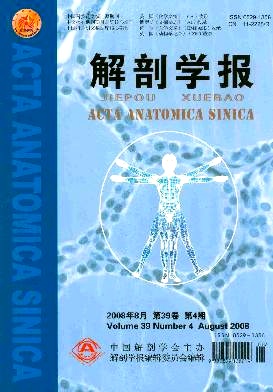|
|
Compound Ruikangxin can reverse the structural plasticity of synapses in hippocampus, amygdala and nucleus accumbens in morphine withdrawal rats
2011, 42 (3):
300-306.
doi: 10.3969/j.issn.0529-1356.2011.03.003
Objective To observe effects on both anxiety-like behaviors and structural plasticity of hippocampus, amygdala and nucleus accumbens in morphine withdrawal rats administrated with collocystis of compound Ruikangxin (CR). Methods SD rats, 84 in all, were randomly divided into control group, model group, CR groups involving high, middle and low dosages, and buspirone group. Gradually increasing dosages were applied to establish the model of morphine dependence in rats suffered from drugs (subcutaneous injection) for 10 days and followed by collocystis of CR (300, 200, and 100 mg/kg, intragastric administration) for 1-3 days. The elevated plus-maze tests were applied to validate the anxiety-like behavior in rats. Samples of hippocampus, amygdala and nucleus accumbens (EM>n/EM> = 6) were harvested and further observed after preparation for electron microscope sample. Stereological methods and changeable parameters were applied to ensure accurate and unbiased comparisons of numerical density (Nv), surface density (Sv) and average area of synaptic surface (S) in those samples. Results Compared with model group, higher percentage values of open arm entries and time spent in the open arms were observed in CR groups (300 and 200 mg/kg) (SUP>P/SUP><0.01, EM>P/EM><0.05). Lower scores of Nv and Sv in hippocampus and amygdala (EM>P/EM><0.01) and higher values of S (EM>P/EM><0.01 or EM>P/EM><0.05) were observed in those cured groups. Moreover, lower values of Nv in nucleus accumbens were detected (EM>P/EM><0.01) in the CR groups. Lower values of width of synaptic cleft, thickness of post synaptic density, length of active zones and curvature of synaptic interface were observed in CR (300 and 200 mg/kg) groups (SUP>P/SUP><0.01 orEM> P/EM><0.05). Conclusion Obviously, collocystis of CR was capability of reversing the anxiety-like behavior in rats by rehabilitating structural plasticity of hippocampus, amygdala and nucleus accumbens, which could be the cell biological mechanism of anxious symptom.
Related Articles |
Metrics
|


